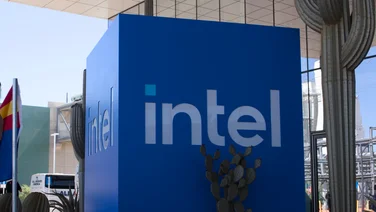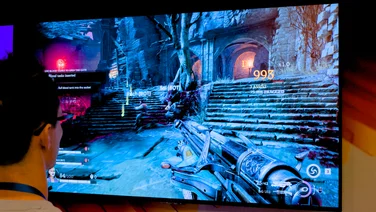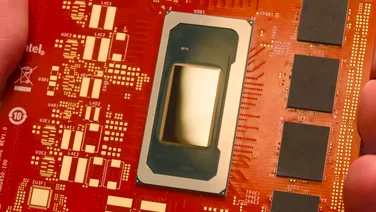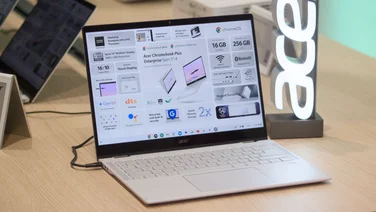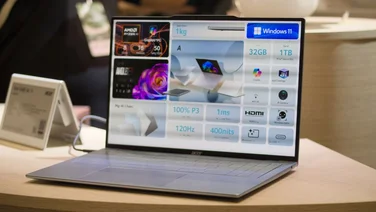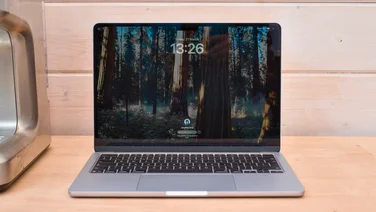To help us provide you with free impartial advice, we may earn a commission if you buy through links on our site. Learn more
- Huawei MateBook 14 review: What you need to know
- Huawei MateBook 14 review: Price and competition
- Huawei MateBook 14 review: Design
- Huawei MateBook 14 review: OneHop
- Huawei MateBook 14 review: Keyboard and touchpad
- Huawei MateBook 14 review: Display
- Huawei MateBook 14 review: Performance and battery life
- Huawei MateBook 14 review: Verdict

- High CPU and storage performance
- Long battery life
- Relatively good value
- Huawei ban may affect Windows updates
- No Thunderbolt 3
- OneHop feature needs work
It would have been easy to overlook the MateBook 14 when Huawei unveiled it at MWC 2019. With both the Mate X foldable smartphone and a new version of top-of-the-line MateBook X Pro also making their debuts, the less flashy MateBook 14 had to contend for attention with its own stablemates, let alone everything else at the show.
And yet, actually using this laptop has revealed it to not just be an excellent ultraportable, but quite possibly better than the MateBook X Pro itself, at least in terms of how worthy it is of your cash.
Huawei MateBook 14 review: What you need to know
The MateBook 14 sits in the middle of Huawei’s 2019 laptop lineup, below the new MateBook X Pro and above the MateBook 13 (a refreshed, touchscreen-equipped version of the MateBook 13 previously launched at CES). All three are sleek ultraportables and have similar, often identical, choices of Intel Core i5 and i7 processors, Nvidia MX discrete graphics chips and PCIe SSDs.
Differences between the three mainly come down to the overall design, including physical connectivity and display specifications. The Huawei MateBook 14, for example, has a 14in, 2,160 x 1,440 touchscreen – that’s a lower resolution than the MateBook X Pro (3,000 x 2,000), but more screen real estate than the 13in MateBook 13.
Huawei MateBook 14 review: Price and competition
I’m testing the higher of the two available MateBook 14 configurations, which has a Core i7-8565U, 16GB of RAM, Nvidia’s new MX250 discrete graphics chip and a 512GB SSD, and costs €1,499 (no UK pricing was available at the time of writing).
Interestingly, this has the exact same CPU, GPU, memory and touchscreen as the top-spec MateBook X Pro, which is €500 more expensive – a major factor in the MateBook 14’s usurper potential, provided this saving doesn’t come with too many caveats.
It’s also up against the new Dell XPS 13. The closest comparable XPS 13 configuration, with the same Core i7 chip, is currently £1,550, so even if Huawei gets a bit cheeky with UK pricing, there’s still a very good chance the MateBook 14 will be cheaper than this as well.
Huawei MateBook 14 review: Design
The MateBook 14 isn’t as sleek as the MateBook X Pro, nor as compact as the MateBook 13, but it’s still a lightweight laptop with slim screen bezels. Its 1.5kg weight is acceptable for a 14in machine, especially one with dedicated graphics, and it’s well-crafted in general with minimal screen flex and a solid-feeling, all-metal chassis.
This is also the only one of the three new MateBooks to have two full-size USB ports (one USB 2.0, one USB 3.0), in addition to a single USB-C port, full-size HDMI output and 3.5mm headphone jack. This makes it the best-equipped if you want to use multiple USB peripherals and devices without adapters, although the MateBook X Pro does have the advantage of a Thunderbolt 3 port.

The MateBook 14’s USB-C port can handle data transfers and DisplayPort video output, but will likely most often be filled by the charging cable.
The speakers are situated on the underside of the chassis, with small grilles on the left and right sides and a longer grille at the rear. These are Dolby Atmos-branded, and do sound slightly better than the average laptop speakers but not transcendently so. Headphones will still be the better option for listening to music.
As with the original MateBook X Pro, the webcam is hidden inside what would typically be a function key, popping up when you press it. This is a clever idea in theory: moving the camera away from the screen keeps the top bezel thin and anyone with privacy concerns can keep it folded away. In practice, however, it makes for a very unflattering shooting angle. It’s better at capturing the user’s chest than their face, and actually typing on the keyboard while in a video call will treat whoever’s on the other end to an extreme close-up of your fingers.

Much better is the fingerprint sensor, which, in another case of borrowed design from the MateBook X Pro, is integrated into the power button. It works reliably and near enough instantaneously and, when you switch the laptop on for the first time, it stores your fingerprint data, so it can log you in automatically once the laptop fully powers up.
Huawei MateBook 14 review: OneHop
Huawei doesn’t just want you tapping your fingers on the MateBook 14, though. Along with its other two new laptops, there’s support for OneHop, which lets you transfer files between the laptop and a compatible smartphone (basically any Huawei or Honor handset running EMUI 9.0 or later). Simply pair the phone with the MateBook and, with a combination of Wi-Fi Direct and NFC, you can tap the phone onto the laptop to share photos and videos, among other things.
Much of the time, this works well. It takes mere seconds to get a smartphone photo onto the MateBook 14’s screen and, if that picture includes text, you can even use the Text Recogniser tool to extract it in editable form. This text recognition is surprisingly accurate, too. It works better with single paragraphs, as formatting is all but lost in the process, but, besides missing a few bits of punctuation, it’s a respectable execution of optical character recognition (OCR).

The MateBook 14 also has a set of rather sophisticated screen capture tools. That includes video as well as still images: you can record your laptop screen directly to a connected smartphone, which is ideal for capturing candid moments on a video call or if you want to recall how to perform a tricky IT task.
Stills capture is even more in-depth. To start, you drag three fingers down the screen, which initialises the capture mode. From here, you can draw the area you want to capture using your finger, drag a diagonal line to quickly capture a rectangular area or tap once to snap the whole screen. Any captured text will also be given the OCR treatment as before and with equal accuracy.
It’s generally superior to Windows’s own snipping tool, although the implementation isn’t perfect. For example, there’s an annoying delay between the initial three-finger swipe and capture mode opening; on several occasions, I tried swiping again when it appeared not to work only to accidentally snap a finger-sized sliver of screen when capture mode suddenly popped up. Capturing a non-rectangular shape also doesn’t actually save an image in that shape: the final image is a square, with spaces outside the captured area merely filled with black.
Unfortunately, I simply couldn’t get one of OneHop’s most appealing features – a shared clipboard between laptop and smartphone – to work. You’re supposed to be able to copy text on one device and immediately paste it on the other but I could only ever paste locally-copied text, and the pre-installed PC Manager software was no help in determining why the shared clipboard wasn’t working.
The fact that OneHop only works with Huawei and Honor phones is also a considerable, if not entirely surprising, limitation. But it would have been a much more compelling reason to buy a MateBook if it worked with other Android devices. Finally, it’s worth noting that, while images transfer in a couple of seconds, videos take a lot longer. A 201MB MP4 file took 1min 6secs to transfer, which is a lot longer than it would take to just grab a USB cable or upload it to cloud storage.
Huawei MateBook 14 review: Keyboard and touchpad
Still, even if the MateBook 14’s fanciest feature could be better, there’s little to complain about with the core hardware. The keyboard, for instance, is great: even with a short travel depth, each keypress has a positive, crisp action, and the keycaps are nicely spaced. There are no unusually undersized keys or other oddities, although some might find the cursor key layout something to get used to.
The touchpad is good, too. Besides being smooth and responsive, it’s pretty big for a laptop this size. There’s more than enough space to get the cursor from one corner of the screen to the opposite in a single swipe, even when set to a somewhat low-ish default sensitivity.

Huawei MateBook 14 review: Display
At 14in across the diagonal, the MateBook 14’s touchscreen is the largest in Huawei’s 2019 lineup. It’s a 2,160 x 1,440, IPS panel with a 3:2 aspect ratio, which proves handy for reading web pages or editing long documents, as you’ve got a touch more height than on 16:9 laptops such as the Dell XPS 13.
Admittedly, the Full HD non-touchscreen Dell XPS 13 I tested came out better in our measurements. The MateBook 14’s 85.5% sRGB coverage and average Delta E of 2.02 both fall behind the XPS 13’s 95.2% and 1.6, making the latter better for photo and video editing. The MateBook 14’s 384.6cd/m² peak brightness and 1,577:1 contrast ratio are also lower than the XPS 13’s 413cd/m² and outstanding 1,643:1, and Dell’s choice of a matte finish helps keep reflections at bay much more effectively than the MateBook 14’s glossy screen.
That said, this is far from a bad display. That contrast ratio, in particular, is a great showing and, anecdotally, the MateBook 14 looks just as bright and vibrant as could be expected of a £1,000-plus Ultrabook.
READ NEXT: Dell XPS 13 (2019) review – one step closer to laptop perfection
Huawei MateBook 14 review: Performance and battery life
The best argument for choosing the MateBook 14, however, is performance. Despite being cheaper than both the MateBook X Pro and the XPS 13, the MateBook 14 matches them with its quad-core Intel Core i7-8565U, so it’s just as fast.
In fact, it came out slightly ahead of the XPS 13 in our 4K benchmark tests, scoring 97 overall to the Dell’s 95, and its Geekbench 4 scores of 5,150 in the single-core test and 17,413 in the multicore test are both higher than the XPS 13’s as well. Part of this is likely down to the MateBook 14 having 16GB of RAM to the XPS 13’s 8GB. Only the Razer Blade Stealth 13 has scored higher with the same CPU, with an overall score of 115 in our in-house tests.
Another advantage the Huawei MateBook 14 has is its Nvidia MX250 graphics chip, which is the successor to the MX150 found in the most expensive MateBook 13 spec, as well as the Blade Stealth 13. Compared with this previous GPU, it seems to only provide a modest gaming performance bump rather than a massive one but it’s enough that the MateBook 14 can run the GFXBench Manhattan onscreen test at almost the exact same speed as the Blade Stealth 13, despite Razer’s laptop having a lower-resolution (and thus less GPU-intensive) display.
The MateBook 14 also beat the Blade Stealth 13 in the Metro: Last Light Redux benchmark, returning an average of 45fps at 1080p with High settings enabled – the Blade Stealth was only able to reach an average of 39fps. That may not sound like a big difference, but it’s just about noticeable. The Dell XPS 13, though, is consistently thrashed in all these tests, thanks to its lack of a dedicated, discrete graphics chip.
Storage speed is superior on the MateBook 14, too. Using AS SSD, I measured lively sequential read and write speeds of 2,228MB/sec and 1,810MB/sec respectively. On both counts, that’s faster than the XPS 13 and Blade Stealth 13, and not by a small margin, either.
The only thing the XPS 13 comes out on top for is battery life, although only by a sliver. Dell’s laptop lasted 10hrs 35mins in our video playback test, where the MateBook 14 managed 10hrs 24mins. That’s still a superb result for the Huawei, especially when you remember the higher resolution and always-on touchscreen will have been had a negative impact on the result.
READ NEXT: Hands-on with Huawei’s all-new MateBook X Pro
Huawei MateBook 14 review: Verdict
It’s hardly the done thing to get excited about the middle child of a new product range. There’s not quite the same level of premium flashiness as with something such as the Huawei MateBook X Pro – nor the benefit of being the most affordable option, as with the MateBook 13.
Regardless, the MateBook 14 looks like the canniest choice of the three. It lacks a handful of the MateBook X Pro’s truly high-end perks, such as Thunderbolt 3, but the key internals are equally potent and it’s more versatile than the MateBook 13, with a better variety of ports and more powerful graphics.
That’s not to forget about some of the 14’s weaknesses, such as the iffy webcam positioning or MIA OneHop features, but neither of these impact on everyday use unless you make regular video calls. The core tenets of performance, build quality, display quality and battery life are all fulfilled beautifully, and for less cash than the competition.


